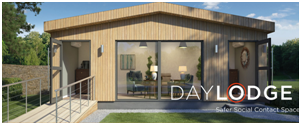Designing in a Post COVID World
On one of our first post lock down visits to a care home, I was interested to hear from my client on how she felt her care home environment would need to change. Her feeling was that she still very much wanted the home to feel like home and her concern was that by, in the spirit of infection control, moving towards finishes and furnishings more in line with hospital requirements, the home would become too clinical.
Of course design starts with considering who uses the space, what they use it for and (to me this is critical) how do we want them to feel? Residents, carers and visitors will of course want to feel safe; this is incredibly important. But the care environment will still need to feel relatable and domestic in aesthetic. It also needs to support how we need to do things, as we adapt to living with current and future threats of a pandemic.
It has been widely recognised that for many residents during lock down, having to go without face to face visits from loved ones has had a massive impact on resident mental health and well-being. For residents living with dementia, they are likely to be dealing with disruption to their normal routine, a reduction in cognitive stimulation, increased levels of anxiety and a real sense of being abandoned. Whilst the summer months have enabled garden visits from loved ones, this will not of course be practical in a cold a wet November.
Dedicated, inviting yet easy to clean, visitor rooms will become more important. For these visits, how people move through the care home environment, will need to be considered with visitor spaces close to entrances or external dedicated summer houses or similar. Edison & Day have developed the DayLodge especially for visitors. In some homes, staff accommodation will need more consideration. During lock down there were many examples of selfless carers, living away from their own families for weeks, camping in the grounds of the home so that they could look after residents as safely as possible. Creating restful, easy to live in environments for care teams to retreat to, is to me now even more important. Self-isolation has also thrown a spot light on the need for resident bedrooms to be well-designed. Also storage space, so often in short supply within the care setting, might need to be reviewed to accommodate PPE stocks.
Will we need to move to more metal and less wood? Will vinyls become more of a requirement in certain areas? Will certain types of wall covering need to be avoided? I think it’s a balance and however we move forward, we need not to lose sight of the fact that care homes are exactly that, homes. Homes which need to be safe but also feel comfortable, familiar and supportive.


 As well as having written for regional magazines including
As well as having written for regional magazines including
Comments are closed.